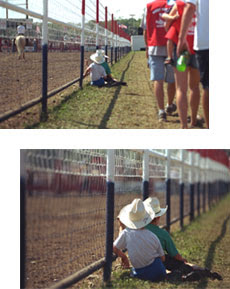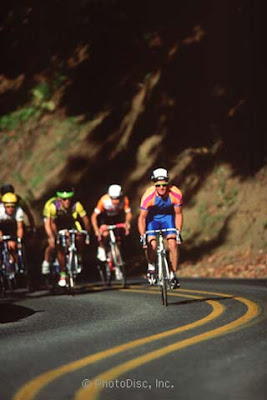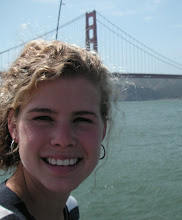In order to achieve a certain effect, there are several techniques to use which make the subject or the purpose of the shot apparent. To highlight the meaning of the image, it is important to think about these things to make the shot have meaning rather than simply a photograph of something you came across.
For one, when shooting an image, decide first what your main focus is going to be. Rather than seeing a nice view and taking an image decide what you want to focus on: a certain person in the scene, a hill, the sunset... In this case as demonstrated by Kodak: Composing your Pictures, the photographer has focused in on the children, eliminating all other distracting people and directing the eye towards them. This proves very effective in this case. In the first image, the picture is too general, but closing on on the two childrem along the fence achieves the effect by isolating the children. In some cases, this can be done after shooting, ie enlarging the shot in the darkroom and cropping out some information.

However the angle of the shot cannot be edited in. You must decide at that moment which angle highlights the subject and hence gives the desired effect. Changing the angle of the shot can usually help drastically when trying to achieve a certain effect. Taking shots from above or below standing level can change the size, and hence the importance, of the subject. For example, in Tanzania, when I was taking some shots of the children I crouched down so that I was at their eye level. The effect of this was to be able to see their faces better. Instead of looking down on children, this presented equality and made it easier to look at the children straight in their faces so as to see emotions better.

In the second example, the angle is from above, to emphasize the crouching action of the little girl.

Another way to achieve a certain effect is to use leading lines to guide the eye towards a certain subject. Leading lines are those in a shot that naturally guide the eye towards the center of interest, sometimes off in the distance or closeby. In this case from Kodak, the lines of the road converge at the walking couple, drawing the eye towards them. Also, note that the righthand white stripe is diagonal. Including diagonal lines in a shot, or adjusting your angle so that these are included is a good technique to use because diagonal lines tend to make the shot more interesting and dynamic.
 In this example from How to Take Perfect Pictures Every Time: Leading Lines, curvy lines in a road are used to draw the eye to the cyclists - the one in the forefront in particular rather than just a group of cyclists.
In this example from How to Take Perfect Pictures Every Time: Leading Lines, curvy lines in a road are used to draw the eye to the cyclists - the one in the forefront in particular rather than just a group of cyclists.
Another thing to remember when trying to achieve an effect, particularly when shooting an image of people is to let those people do their thing. Instead of posing them in a specific way, 'catching' them doing their normal or characteristic things, in other words taking a shot of them in action will yield a more meaningful image than one that is posed a certain way. In this case, from Kodak: Photographing People, a candid shot of the couple is taken which helps to achieve a lighthearted, playful effect.



No comments:
Post a Comment